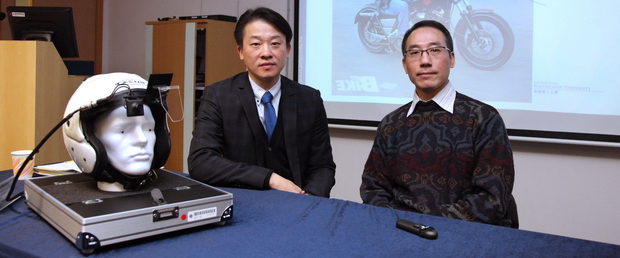|
|
|
|
|
|
|
Motorcyclists involved in crashes – a matter of attitude |
|
|
Motorcyclists involved in crashes – a matter of attitude
|
PolyU has conducted a two-year study to better understand the role of human factors in traffic accidents involving motorcycles, thereby developing effective counter-measures for the prevention of traffic accidents. In this issue, Dr Andy Cheng (above, left), Assistant Professor of PolyU’s Department of Rehabilitation Sciences (RS), also principal researcher of the study, will share with readers the results of the study. Q1: Can you briefly introduce the research method? The study was conducted by the Ergonomics and Human Performance Laboratory of RS starting from 2008. In the first stage of study, some 920 motorcyclists were involved, in which 330 (35.9%) had been involved in traffic accidents. They were asked to complete a questionnaire comprising three parts: (1) demographic information, (2) an 18-item traffic risk perception checklist, and (3) a 19-item Chinese Motorcyclists Driving Violation Index. After that, 109 motorcyclists were asked to perform neuropsychological and simulated motorcycle driving tests in the second stage of the study. Q2: The study categorized the traffic risk perception into three dimensions, including driving-based risk, environment-based risk, and belief-based risk, could you share with us the special findings on this? The findings showed that those motorcyclists involved in crashes considered accidents were more related to “bad luck” and “fate” (belief-based risk), rather than factors related to driving (driving-based risk), such as unsafe overtaking and driving when tired. Q3: What were the findings reflected by the “Chinese Motorcyclists Driving Violation Index”? The total mean score of the Index of accident-involved motorcyclists was 33.7% higher than accident-free motorcyclists, showing that they have a higher propensity for overtaking and speeding. Q4: In the second stage of the study, 109 motorcyclists (including 46 accident-involved drivers and 63 accident-free drivers) were involved. What did they do and what did the results show? They undertook neuropsychological tests of visual attention, and viewed different road situations with an eye-tracking system to record the response latencies for potentially dangerous traffic situations. The results showed that accident-involved motorcyclists had fewer eyeball movements, they looked at the rearview mirror less often than accident-free motorcyclists, and they took longer time to identify hazardous situations. Q5: How will PolyU turn the results of the study into initiatives that can benefit the citizens? Based on the results of the study, the researchers at PolyU have developed specific training programme for motorcyclists to enhance their road hazard perception skills.
|
